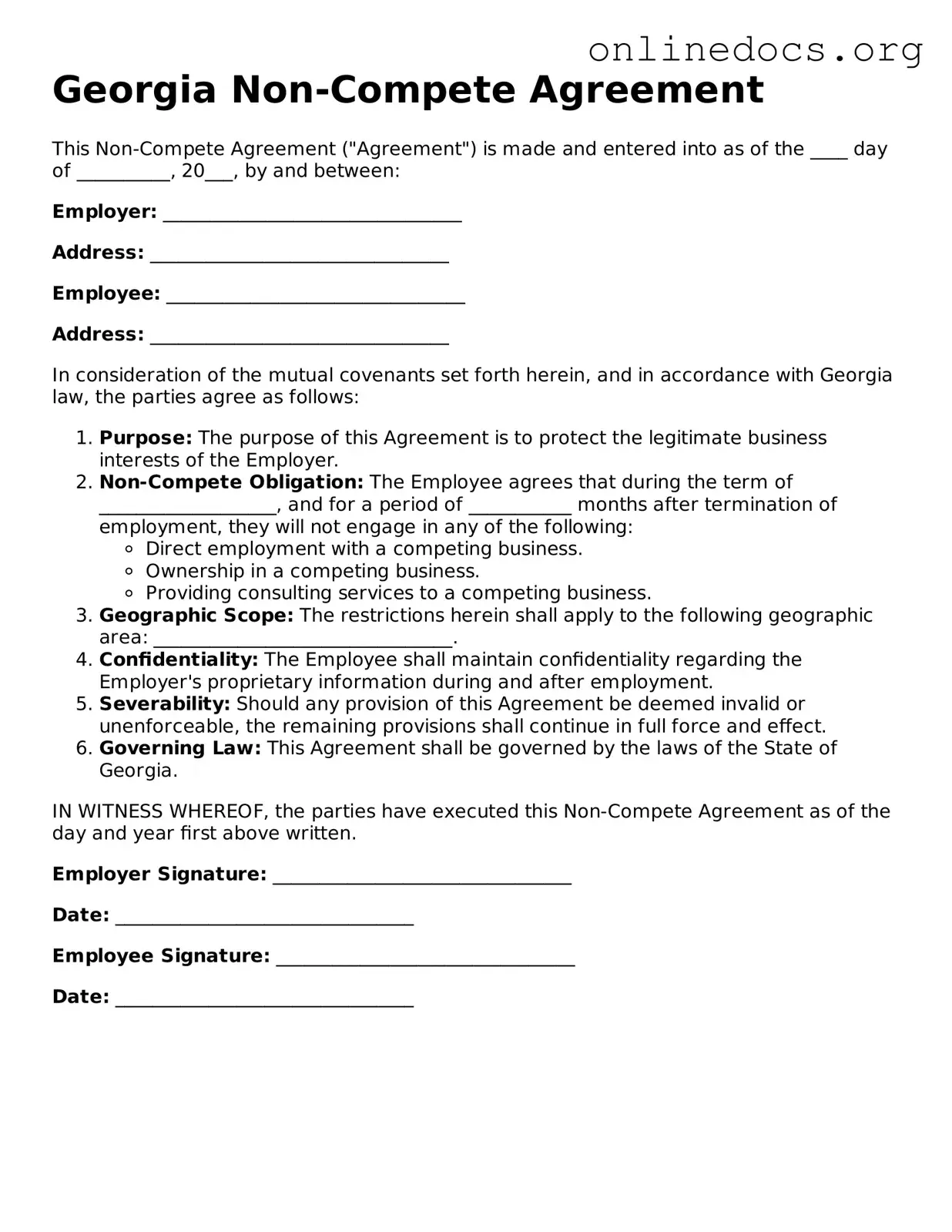The Georgia Non-compete Agreement is similar to the Employment Agreement, which outlines the terms of employment between an employer and an employee. This document often includes details about job responsibilities, compensation, and benefits. Like the non-compete, it can restrict certain actions, such as working for competitors or starting a similar business after leaving the company. Both agreements aim to protect the employer's interests while also clarifying the employee's obligations.
In considering various legal documents that govern relationships and protect interests, it is essential to recognize the importance of understanding each type, including the californiapdfforms.com/power-of-attorney-for-a-child-form/, which facilitates the temporary transfer of decision-making authority for minor children in specific circumstances.
Another document that shares similarities is the Confidentiality Agreement, also known as a Non-Disclosure Agreement (NDA). This document protects sensitive information that employees may encounter during their employment. Like the non-compete, it prevents former employees from sharing proprietary information with competitors. Both agreements seek to maintain the integrity and competitive edge of the business.
The Partnership Agreement is yet another document akin to the Non-compete Agreement. This document governs the relationship between business partners, outlining roles, responsibilities, and profit-sharing. Similar to a non-compete, it may contain clauses that restrict partners from starting competing businesses or soliciting clients after leaving the partnership. This helps to safeguard the business interests of all partners involved.
A Franchise Agreement also bears resemblance to the Non-compete Agreement. This document outlines the terms under which a franchisee can operate a franchise, including restrictions on competing businesses. Both agreements serve to protect the brand and ensure that franchisees adhere to specific operational guidelines. The non-compete aspect reinforces the franchise's value by preventing franchisees from undermining the brand’s reputation.
The Shareholder Agreement is another document that aligns with the Non-compete Agreement. It governs the relationship between shareholders in a corporation, detailing rights, responsibilities, and restrictions on selling shares. Similar to a non-compete, it may include clauses that prevent shareholders from competing with the company or soliciting clients, thereby protecting the company’s interests and investments.
The Independent Contractor Agreement is also comparable to the Non-compete Agreement. This document defines the relationship between a business and an independent contractor, specifying the scope of work and payment terms. Like the non-compete, it may include clauses that restrict the contractor from working with competitors or starting a similar venture for a specified period after the contract ends. This ensures that the business's trade secrets and competitive advantages remain protected.
The Non-Solicitation Agreement is closely related to the Non-compete Agreement. This document prohibits an employee from soliciting clients or employees from their former employer after leaving the company. While the non-compete restricts the employee from working in a similar field, the non-solicitation focuses specifically on preventing the poaching of clients or staff, thus safeguarding the company’s relationships and resources.
The Licensing Agreement can also be seen as similar to the Non-compete Agreement. This document allows one party to use another's intellectual property under specific conditions. Like the non-compete, it may include clauses that prevent the licensee from competing directly with the licensor's business. This ensures that the licensor’s interests are protected while allowing for collaboration and use of valuable resources.
Lastly, the Release of Liability Agreement shares some characteristics with the Non-compete Agreement. This document protects a party from legal claims resulting from certain actions or events. While it doesn't directly restrict competition, it may include terms that prevent the releasee from engaging in activities that could harm the releasing party's interests. Both documents aim to establish boundaries and protect parties from potential risks.
